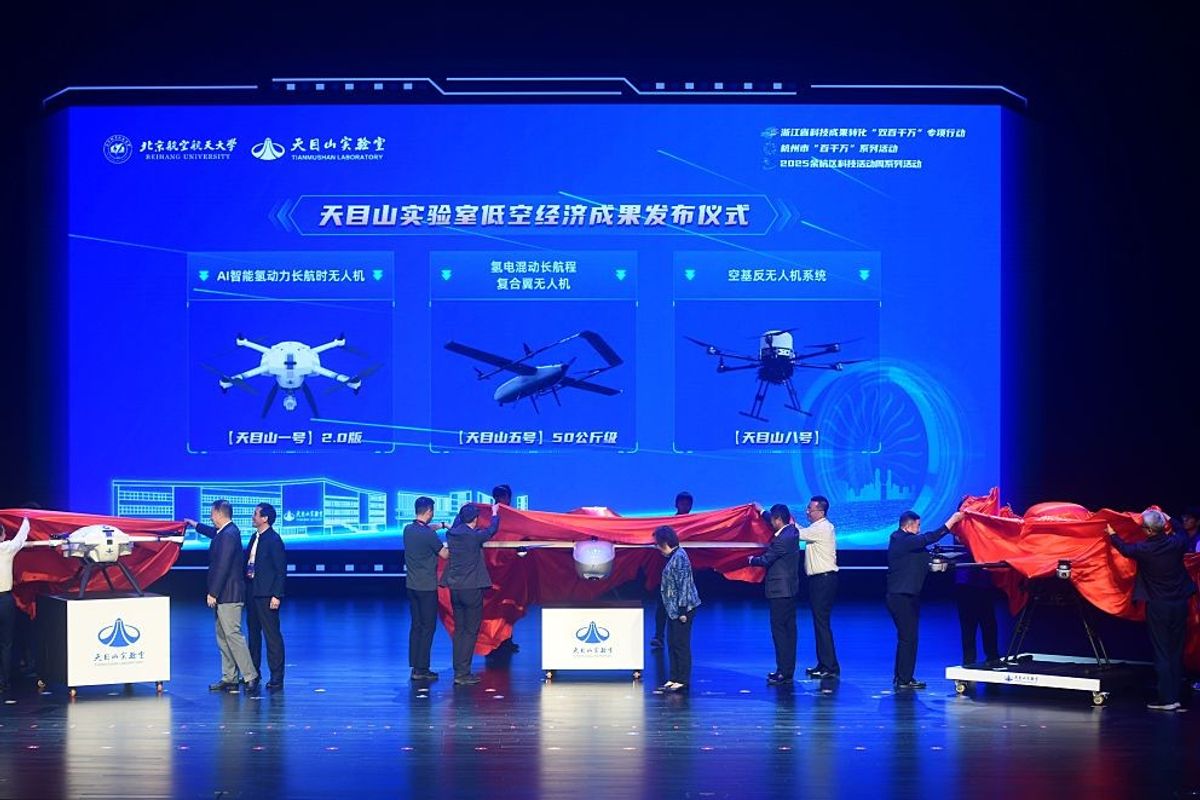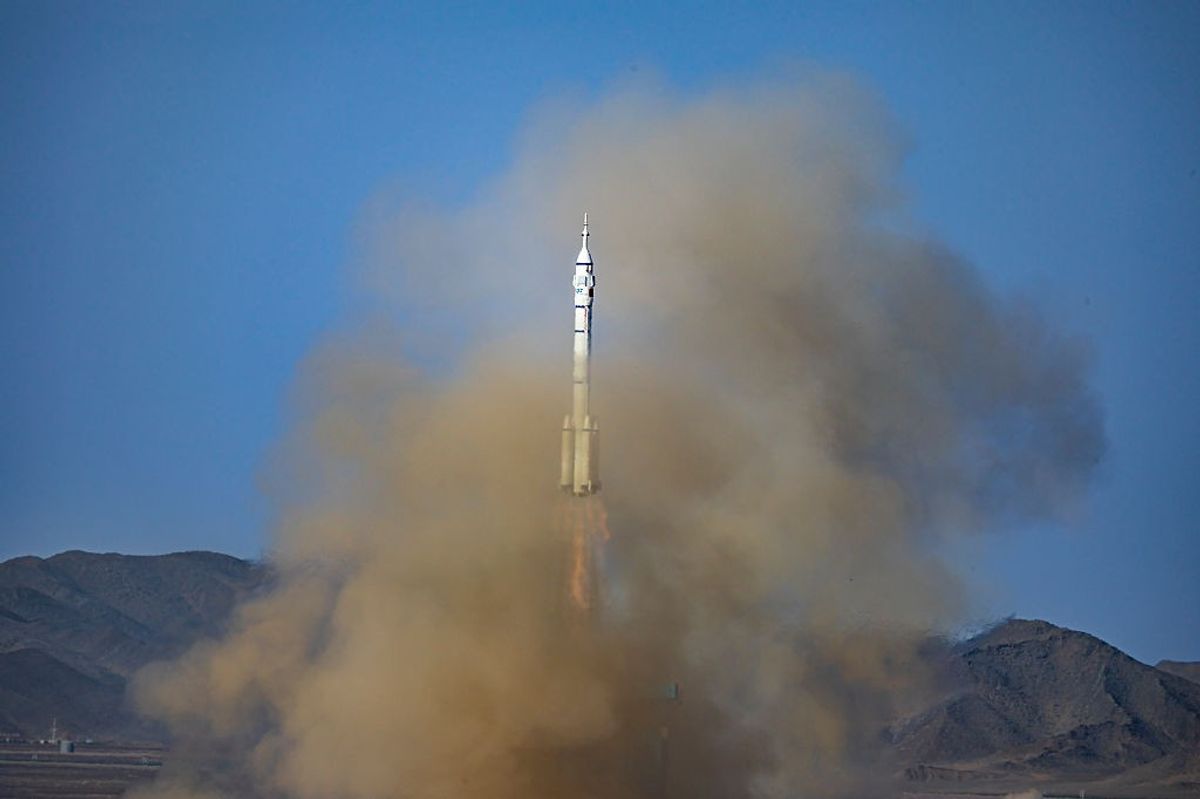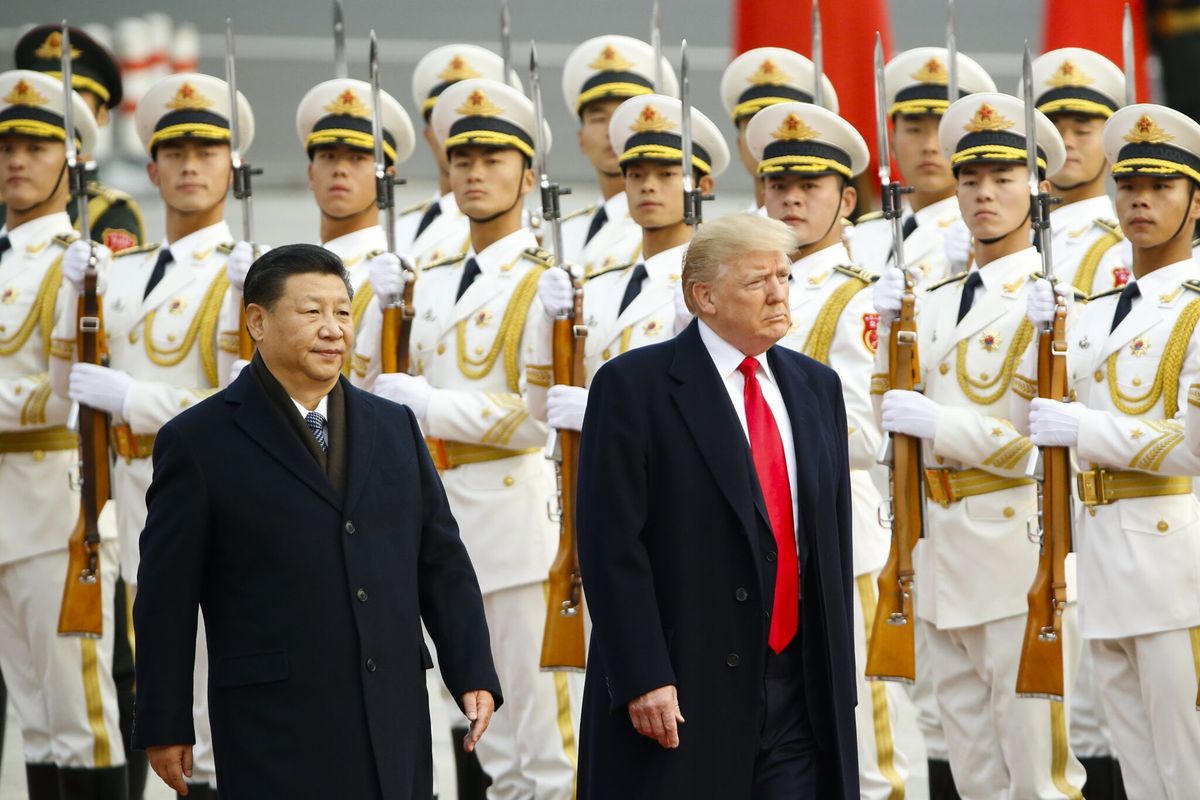SUBSCRIBER+ EXCLUSIVE REPORTING — A race for control of space is underway, and just as on earth, the U.S. and China are the top competitors. ”Congested and contested” is the way Deborah Lee James, former Secretary of the Air Force, describes the current space environment, in which earthly frictions and ambitions are being projected into space, with China and the U.S. leading the way.
James and other experts told The Cipher Brief that today’s uneasy mix of economic competition and military rivalry between Washington and Beijing now stretches into the heavens.
“China has had a ‘territorial approach’ to the activities here on earth, and there is a likelihood they will continue this approach and carry this mindset out to space,” said Charles Galbreath, a senior fellow for Space Studies at the Mitchell Institute, who recently analyzed the competition for the moon, or what he called “the first island off the coast of earth.”
At stake are a slew of lunar “firsts” that would bring national prestige, scientific discovery, economic windfalls and military capabilities to the victor. Kari Bingen, director of the Aerospace Security Project at the Center for Strategic and International Studies (CSIS), told The Cipher Brief that “all of those reasons probably are what is motivating China.” Bingen said national moon programs are “another front of a broader geostrategic competition underway here on earth.”
That competition has led to a fundamental question about lunar settlements and deeper space exploration: Can they be done peacefully and cooperatively, or is space destined to be one more arena for U.S.-China conflict?
Lunar treasures?
Beyond the global prestige attached to lunar missions, there are dreams - however far-fetched - of riches to be found.
“It's also a question of the moon being a source of minerals, a possible location for a colony, or a place where there could be a permanent base for people,” James told The Cipher Brief.
Of all the moon’s potential resources, none is more important than water. As James noted, water “could support human life,” and its components used to produce rocket fuel, specifically liquid hydrogen and liquid oxygen.
Other potential economic benefits include the mining of lunar minerals and metals. Although accurate assessments of the moon’s mineral riches will require further exploration and prospecting, lunar samples brought back by the Apollo missions revealed the presence of silicon, titanium, calcium, and magnesium as well as rare elements such as helium-3 and thorium. A Chinese mission in 2020 returned with changesite, the sixth new lunar mineral to be discovered.
Experts say the abundance on the moon of helium-3 — current analyses indicate there are at least one million tons of helium-3 embedded in the lunar surface – could be used for nuclear fusion processes. Scientists are also intrigued by the prospects for capturing solar power on the lunar surface and sharing it with the earth via microwave-power transmission.
China, the U.S., and the next frontiers
Even if there are only limited treasures to be found on the moon, many say the race is on because of the inherent value in getting there first. In this view, the moon will serve as a springboard for exploration of the further reaches of space. As James put it, “Whoever gets there first might have an advantage on setting the rules of the road, how the future is dealt with.”
The U.S. Artemis space exploration program – established in 2017 - aims to return humans to the moon and eventually send astronauts to Mars. It’s a multinational venture, with collaborations planned with the European Space Agency, Japan and Germany, among others. Artemis launched its first flight in 2022, but as far as actual lunar operations are concerned, the next crewed mission will be a moon fly-by in 2025, with no astronauts touching the moon’s surface until 2026 at the earliest. Even that date is heavily dependent on resolving development and safety issues with key Artemis equipment – the Orion spacecraft heat shield, the SpaceX Starship lunar lander, and even the moon suits to be worn by crews.
China, by contrast, is moving at warp speed. It has planned two lunar surface survey missions – known as Chang’e 6 and 7 – that will pave the way for selecting a site for a permanent lunar outpost. China plans to design, build, and deploy components for that outpost over the next decade, with a target date of 2036 for an operational settlement on the moon.
All this is driven by a Chinese initiative, the International Lunar Research Station (ILRS) program, which is directed by the China National Space Administration (CNSA). Beijing continues to promote the ILRS as a multinational undertaking, which Russia joined early on, and which seven other nations have committed to so far.
Galbreath says the onus is on the U.S. to be the “first mover” in lunar exploration. Otherwise, he told The Cipher Brief, China’s “self-interested goals and actions” will result in a replay in space of the country’s actions in the South China Sea and other waters – “covert weaponization, territorial claims, coercion, and other aggressive behavior.”
Those views are echoed at NASA and on Capitol Hill. NASA Administrator Bill Nelson put it bluntly in an interview with Politico. “We better watch out that they don’t get to a place on the moon under the guise of scientific research,” Nelson said. “And it is not beyond the realm of possibility that they say, ‘Keep out, we’re here, this is our territory.’”
Wariness about China’s goals has been heightened by the fact that its space program is an integrated scientific-military enterprise - what has been referred to as Beijing’s “Military Civil Fusion Development Strategy” - and heavily influenced by the People’s Liberation Army (PLA).
The PLA has a dedicated arm, the Strategic Support Force (SSF), that operates across China’s military to integrate advanced technologies and manage satellite launch facilities and training bases, along with reconnaissance and navigation satellite systems.
The PLA also works hand in hand with state-owned technology enterprises. The Washington Post reported last year that Chinese space technology is dominated by the China Aerospace Science and Technology Corporation (CASC) and China Aerospace Science and Industry Corporation (CASIC), both of which originated within the PLA. CASC is China’s leading manufacturer of intercontinental nuclear missiles and a top contractor for military space technology, drones, and launch systems.
It's not surprising, then, that the recent U.S. 2024 Threat Assessment warns that the endpoint of China’a science and technology effforts is “to use this technological superiority for economic, political, and military gain.” The intelligence assessment highlighted Beijing’s overall strategy of developing “an alternative bloc to the U.S.-led Artemis” program, part of which would be achieved by attracting other nations to join its lunar research station effort.
The specter of weaponized space
Since the early days of space exploration, militarization has been a fact. Space is “militarized” in the sense that many national armed forces, along with civilian and commercial users, regularly employ space-based services such as missile early-warning information, weather data, communications, and position-navigation-timing (PNT) capabilities. PNT services are used by militaries for intelligence, weapons, and electronic warfare systems, but are equally valuable to critical infrastructure operations.
The weaponization of space is another matter. Since the early days of the space age, deploying destructive capabilities to space has been outlawed. The 1967 United Nations Outer Space Treaty, which the U.S., China and Russia signed, prohibits "nuclear weapons or any other kinds of weapons of mass destruction" in space, as well as “the establishment of military bases, installations and fortifications.”
Back then, such threats were limited by the state of technology; James described circumstances in 1967 as “really quite benign; there were very few nations that even had the capacity to reach space.”
Fast forward to today, and outright ruptures of the treaty’s fabric are being contemplated. As the CSIS’ Bingen pointed out, “the Russians are really challenging that right now...they're (reportedly) looking to deploy a nuclear weapon, a space-based nuclear anti-satellite weapon in space that would be a clear violation of this longstanding outer space treaty.” As for China’s space intentions, the Department of Defense’s 2023 annual report on Chinese military and security developments warned of China’s “ability to control the space-enabled information sphere and to deny adversaries their own space-based information gathering and communication capabilities.”
Cislunar space – “the real wild, wild west”
For all the concerns about the current state of the space race, there’s a further frontier that worries many experts.
James notes that most space activity today – military, civilian and commercial — is confined to what’s known as low-earth-orbit (LEO), while satellites, especially communications and weather platforms, are found at the highest earth orbit, known as geosynchronous (GSO) space, some 22,000 miles above the equator. Beyond that lies cislunar space, which James believes could be “the real wild, wild west” of space exploration and travel.
A frontier metaphor fits for the cislunar expanse, and in Galbreath’s view, this is where future international space competition and conflict will play out. If China’s past actions are prologue, Galbreath argues, it is imperative for the U.S., its allies and partners to “prevent China from enacting a similar strategy in the cislunar regime.”
Bingen describes the expanse as critical for a future architecture that will deliver “space situational awareness.” She explains that “just as we understand where aircraft are in the sky and make sure that we can manage and deconflict flight paths, we'll need capabilities to be able to monitor all the different objects in space to figure out what they are, what trajectories are they on, deconflicting to avoid any collisions or accidents.”
The components of a cislunar awareness system could include optical and radio frequency sensors on spacecraft in cislunar orbits to detect, track, and monitor objects. One of the pressing issues facing all spacefaring nations is that there is no universally agreed upon system for the navigation and use of cislunar space.
The resulting ambiguities, Galbreath says, are “well suited for China.” In his view, an aggressive-minded adversary could exploit the cislunar environment through military operations against space systems and critical services.
Glimmers of hope?
Can space survive as a peaceful global commons?
There are multinational initiatives that seek shared goals and norms for space; the U.S.-led Artemis Program has led to the Artemis Accords, which 36 nations have signed, pledging the peaceful and collaborative exploration of space, and there are ongoing talks about such collaboration at the UN. A “democratizing” influence may grow out of the simple fact that many more nations are capable today of space operations; the world’s superpowers no longer hold a monopoly.
Equally important is the surge of commercial entities that have ever-increasing say over who goes to space, and with what capabilities.
And the possibility remains that the U.S. and China will find it mutually beneficial to reach an understanding on some or all aspects of space life – scientific, commercial and military. Recently, Gen. Stephen Whiting, chief of the U.S. Space Command, disclosed an overture from the Chinese to hold talks related to space safety. Earlier this month Whiting told reporters at the 2024 Space Symposium, “We think that is very positive and we would like to continue to build on that.”
Others remain skeptical. And for now, the intensity of the U.S.-China competition on earth has diminished hopes that space’s two superpowers will avoiding replicating their fights in the outer reaches of space.
Read more expert-driven national security insights, perspective and analysis in The Cipher Brief because National Security is Everyone’s Business.













